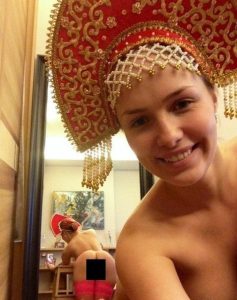Spanx… Glossier…. Nasty Gal. These are all mega brands started by creative, driven people who had little to no experience when they first got their start. And you know who else was scared they didn’t have enough experience (even after working in the fashion industry for 7 years) to start their company? Me. So, today I am going to share with you my blueprint for how to start a clothing line with no experience.
BUT BEFORE WE GET STARTED…
I love helping startup brand founders succeed, so I created a bunch of free guides that will help you with your business.
They won’t be free forever, so make sure to grab them while you can.
HERE’S WHAT YOU’LL LEARN:
- One of the biggest mistakes I ever made in my (professional) life
- The secret to creating an iconic brand that doesn’t get lost in the noise
- How to find proof (hard data and numbers) that your idea is a good one
- Business plan 101
- Product strategy
- Do this to create a product that sells out
- Sourcing
- Turning your brand into its own world
- Launching
- Scaling
- A few extra pro tips
- Quick Resource Guide
DON’T FEEL LIKE READING? CHECK OUT THIS 60 SECOND SLIDESHOW…
I am going to be brutally honest with you. It won’t be easy. You’ll work your butt off; it might even feel like you are working more than you did in your 9-5. But, I promise it will all be worth it. And, I can confidently say that if you stick with me, not having experience will be the least of your worries.
So, here’s what you need to do:
I MADE THIS MISTAKE SO YOU DON’T HAVE TO

The first year I was in business I found myself $30,000 in debt. I even had to take out a second credit card, because I’d maxed out the first one. I was basically the poster child of what not do for how to start a clothing line with no experience.
The thing was, there was no one huge bill. It was a dribble of things: $150 for a print artist here, $200 for a popup there, $500 for Facebook ads… but it all added up.
When I took out the second credit card, I forced myself to take a look at all my numbers. And I realized a lot of the things I was spending money on weren’t making me money. And some of the things I was doing that actually were helping my business grow, I wasn’t investing enough in.
I audited my entire company. And you know what? In 6 months I was able to pay off my debts and start making profits.
The lesson here? Have a plan. Don’t just start this whole brand thing haphazardly (and, don’t worry if you have no idea how to budget, down below I will get more into all the money things with you)!
ONE: DEFINE WHAT YOU WILL MAKE AND WHO YOU WILL SERVE

You can’t start an empire without knowing where to build it
You probably wouldn’t be reading this if you didn’t already have some sort of idea about the type of brand you are trying to build. Whether it’s the perfect, casual-wear suit for women, a line that aims to make Eastern styles more accessible in the West, or a brand that is all about embracing individuality —something brought you here.
[BTW, if you are interested in learning more about my amazing clients who were literally sitting right where you are now with zero fashion experience – check them out here.]
Your first task when starting your own clothing line is to distill all the thoughts in your head into one single sentence. This is your mission statement. This one sentence will guide everything you do and every decision you make from this point forward.
Take ex-New Zealand soccer player, Tim Brown, who was driven by a singular question: why weren’t the amazing properties of wool being utilized in the shoe industry? As a result, the brand Allbirds was born.
Allbird’s mission statement is “we create high-quality earth-friendly shoes using nontraditional materials, for people who care about performance but also the climate.”
Get it?
What are you making, and who is it for?
If this isn’t clear from the start, you risk never finding an audience who “gets” your brand. Not because you didn’t do a great job designing and manufacturing a beautiful, quality clothing line. But because you got lost in a crowded marketplace. So, really narrow in.
Once you know all of this you can get to work creating your logo, tagline, and brand identity.
For more help creating a brand identity, check out this post.
TWO: MARKET RESEARCH

I think my idea is a good one, but is it really?
The key to figuring out if you have a good idea is learning if customers are going to want to buy your products, and how much they are willing to pay for it. And the secret to figuring that out is learning everything you can about your target market.
And, this is done through market research. You are going to need to deep dive into the world you want to sell to, becoming an expert.
This step is really important when figuring out how to start a clothing line with no experience, because it is literally going to make you an excerpt in your niche. Here are a few tips to do that.
ASSESS THE MARKET
Is the market saturated? How many brands are out there doing what you want (or close to) what you want to do?
Then, look at the market size. How many people are interested in the type of product you want to make? You can figure this out by looking at your competitor’s web traffic and Google Search Trends.
The ideal market has low competition, and a large market size.
If there is high competition and small market size, you might want to tweak your idea a little bit to something less competitive.
WHAT CAN YOU DO BETTER THAN YOUR COMPETITORS?
When starting your own clothing brand, you want to study your competition carefully. What are they doing right, and what are they doing wrong? Where are the gaps and opportunities in the market?
My favorite trick to do this is the 3-star review. You don’t want to look at what the die-hard fans of the brand have to say, or the ‘Karens’ – you want middle-of-the-ground people, the ones that like the product, but think it could be better.
Figuring out what you can do better, will be your key to outperforming the competition.
OBSESS OVER YOUR TARGET CUSTOMER
Ask yourself, who’s out there already buying what you want to make?
You want to get into their heads. Where are they hanging out? Go there, and make new friends. What are they reading? Don’t just read it, join a book club. Really, immerse yourself in their world.
Once you are totally in the community, it’s time to create a customer profile. This profile will help you determine everything from the fonts in your branding to the words you use to describe your product, to the colors and prints you offer.
A customer profile is a description of one very specific (fictional) person, where you answer questions about them like… Who are they, where do they live, work, and what do they do after work? What are their friends like, what are their hopes, dreams, and fears?
By visualizing just one person, it will help you niche down, and become super relatable to your target audience. I bet you’ve heard this before, but it’s so true – when you try to be everything to everyone, you end up being forgotten, so try to get really focused with your customer profile.
THREE: WRITE UP A CLOTHING LINE BUSINESS PLAN

The most valuable homework you’ll ever do! Please learn from my mistakes.
A lot of people think that the purpose of a business plan is to convince investors to give you money. But, the real purpose of a business plan is to keep you financially on track. It’s estimated that 20% of small businesses fail in the 1st year, and 45% won’t be around long enough to see year five.
When people ask me about how to start a clothing line with no experience and be successful, I am always really transparent with them. Almost all of these failures can be traced back to a bad business plan, and poor financial planning.
I know, this is the worst part. We’re in fashion to be creative and fun, not sit at an Excel spreadsheet, right? But, you really need to do this.
EVERY CLOTHING BUSINESS MODEL LOOKS A LITTLE DIFFERENT. BUT, GENERALLY THEY ALL INCLUDE THE FOLLOWING…
- An executive summary and company description that includes your mission and inspiration for starting the brand
- A market analysis that includes industry trends, market size, your business’s growth potential, your closest competitors, and a thorough review of your customer demographics and preferences (basically all that stuff that I just told you about)
- A solid product strategy and competitive advantage that includes the unique features, design aesthetics, innovations, or materials that’ll set you apart from your competition (that’s where the 3 star reviews come in)
- The marketing and sales strategies you’ll use to promote and sell your fashion line including brand positioning, pricing strategy, distribution channels, and marketing
- An organizational structure for the management of your business including key team members, hiring plans, etc. (it’s ok if it’s just you to start)
- All the operations and logistics including your sourcing materials and suppliers, QC measures, inventory management, etc.
- Financial projections such as projected revenue, expenses, and profitability. Plus budgeting and a detailed account of funding requirements
- A risk assessment to identify potential challenges and plans to mitigate them (because nothing ever goes perfectly, no matter how much you plan)
For help creating a business plan, you can check out this FREE resource.
FOUR: DEVELOP YOUR PRODUCT STRATEGY

Don’t design a Fendi if all you can afford to make is a Mango
Perhaps the most underrated step but one I think can have the most potential impact on your bottom line: product strategy.
As Tony Hsieh (the late founder of Zappos) has said about both poker and business: “I learned that one of the most important decisions you can make is what table to sit down at.”
So, to have a good product strategy you need to get 3 things right.
- What are you selling?
- What price point will you be at?
- What margins do you need to stay in business?
Here’s how to dial all that in:
DEFINE YOUR PRODUCT LINE
Smaller is better, trust me. Especially when you’re first starting out. Not just for your cash flow, but even in terms of choice for your customer (as in, too many options can fuel customer indecision–a total sales killer!).
Case in point: A client of mine first launched a huge multi-piece line of womenswear, but over time realized she was barely breaking even. When she enlisted my help, we analyzed her sales to find her best-selling pieces were by far her sweaters. So we stripped down her offerings and when she relaunched as a luxury sweater line, her sales (and profitability) went through the roof.
Too often new brand founders feel like they have to go the department store route – offering everything. But, you don’t. Pick one product that you want to be known for, and get started with just that.
HOW MUCH CAN YOU SELL THIS STUFF FOR?
Here’s the truth, I worked with a brand that sold their pants for over $250 and a brand that sold their pants for under $50. They both used the exact same fabric from the exact same mill.
The only difference? They had totally different target customers and brand strategies. Also, the brand that was selling pants for $50 was selling millions, while the $250 was selling in the thousands. The lesson, a lower or higher price point isn’t always better.
Figuring out your price point is not always about the quality of the materials and product – you can learn more about that here. It’s often about knowing what your customer wants and being able to offer it to them.
Any way you go about it, though, pricing is tricky. You’ll probably get it wrong a few times before you get it right (and in truth will probably keep adjusting it indefinitely, especially as raw material costs only continue to inflate!) But, consider it all just part of the process: refining your idea, and your strategy, so that you can make an indisputable business case for your clothing line.
DO YOUR MARGINS WORK?
One of the worst feelings in the world is to find out that after all the work of designing a clothing line that is actually selling well, — is that your profit margins won’t allow you to sustain that business long-term.
In the fashion industry, profit margins can vary wildly but on average you’re looking at between 2.2 and 2.5x markup. So, say a designer spends $50 to produce a dress, and sells it to a retailer for $110. That retailer then marks it up 2.2x, to bring the price tag up to $242. [Ugh, going to show how once again, it’s literally impossible to make that $12 dress you saw at Target without exploitative labor practices!] You can learn plenty more about margins and profit outlook here.
A pricing strategy may seem premature before you know what your individual pieces look like – but trust me, it’s not. If you know how much you can afford to spend on an article of clothing, it makes decisions about materials, processes, and finishes a whole lot easier.
FIVE: PLAN YOUR MARKETING & PROMOTION

It’s never too earlyy to start marketing
This breaks my heart: brands forge ahead into production and tell themselves they can just throw up a website or write up some Insta ads at the last minute. How hard could it be if you have a great product to sell, right?
Wrong.
To stand out these days, a well-crafted sales strategy is absolutely critical. Therefore, it’s never too early to start thinking about your marketing, messaging, and promotional activities. Even before you have a product.
My favorite way to get started is on social media platforms.
Don’t have a business name yet? That doesn’t matter. Choose any name to start with. You can always change it later. Don’t have a product to create content for? You don’t need one. Instead, create videos and images about what you are working on now. Are you going to a tradeshow, or taking an online course? Share it. You can also create questions and polls that you’re target audience would enjoy engaging with.
It’s never too early to start building an audience (read, potential customers).
Now, there are so many other things that go into a marking plan, and I teach ALL of them in Launch My Conscious Line, but this getting started on social media right now is something that anyone can start today.
SIX: SOURCE AND PRODUCT DEVELOPMENT

Now you’re going to understand why step 4 was so important…
When readers ask me how to start a clothing line with no experience – fashion skills are almost always what they are talking about. That is because the world of manufacturing is confusing, and often clowely gate kept.
Sourcing the right materials at the right price, as well as finding the right, qualified manufacturers is –seriously– a huge piece of this puzzle.
This means exploring what seems like an overwhelming number of fabrics, processes, and finishes. All from a bazillion suppliers you’ve never heard of.
To help, I encourage you to start establishing some sort of qualifying criteria to narrow your choices down. This is where all the previous work we did helps you to streamline your sourcing process.
By this point, you should know
- Exactly what you want to make
- How much it needs to cost
- And, your nonnegotiables (sustainability, ethics, etc)
Armed with this critical info, you will be able to shortlist suppliers and save time by asking them the exact questions that will move the process forward.
Once you settle on a supplier, you will move into sampling. The most important thing to remember about the sampling phase is to never, ever, move forward with production unless you have an absolutely perfect sample.
Think of the sampling process as the supplier’s way of proving they are capable of making your product to the standards you need. That way, when it’s time, production becomes as simple as making multiple of your sample.
For more fabric sourcing and manufacturing help, check out the resource section below.
SEVEN: ESTABLISH YOUR BRANDING, PACKAGING & ONLINE PRESENCE

Draw your customer in with tiny branded details
From your website to your packaging to your business cards, you want to create a cohesive brand image. Even the style of photography you choose should match the mood of your fashion brand and the aesthetic of your target customer.
This step is all about the finishing touches. The little things that will take your brand over the edge.
Some stand-out ideas my other successful clothing line clients have used are:
- Little gifts that come free with orders, like charms and crystals
- Stickers
- Fun packaging that can be reused
At this time, you also want to make sure your online store and social media account align with your brand identity. If you haven’t set up a website for your own online store, for many brands, this is their first sales channel – or at least a landing page – make sure to do that.
EIGHT: LAUNCH YOUR CLOTHING LINE

You did it!
So, how are you going to release your clothing brand baby to the world?
The brand Everlane, for example, used their unique value proposition to launch their brand with an invite-only referral system that got 60,000 signs ups in 5 days (even though the founders, being new to the whole thing—only had about 1500 Tshirts to sell at the time!).
Organize a launch event, or fashion show, and/or create as much buzz as you can for your new clothing line through press releases, media coverage, and other grassroots efforts to get the word out.
Here’s a must-read for more help with a sales marketing plan.
Over time, track your sales and use data to your advantage. Stay on top of learnings and customer insights, making sure to monitor any feedback gleaned from user and/or critic reviews. Use that information to adjust your strategies accordingly.
NINE: SCALE YOUR CLOTHING LINE

You’re off and running; now it’s time to GROW!
Having the guts to launch a clothing line without any experience was a real achievement. But after you start selling, maintaining your business, and growing it, is your new challenge.
But growing a loyal customer base or household name takes care. And, the secret is to build and maintain customer relationships by providing excellent customer service.
Zappos was a disruptor in the shoe industry because they offered unparalleled customer support that slowly won over an audience who, at first, was hesitant to order shoes site-unseen. But free shipping, a 365-day return window, 24/7 support, and personable, trained reps allowed to solve customer problems with lenient refunds completely changed the game.
Consider how you’ll nurture your customer relationships into the future. Try things like implementing a rewards or customer loyalty program or growing an email newsletter base.
Encourage customer reviews, ratings, etc. This way, you can learn from customers and get critic feedback. And continue using data to discover new opportunities. Like expanding into international markets. Or exploring wholesale opportunities by working with showrooms, etc. In other words, continuously innovate and update your product offerings to cater to your growing fanbase.
PRO TIP – ALWAYS BE TESTING
Once you have an idea about who your customer is and what their preferences are, don’t just assume you’re right. You should always be looking at your data and seeing how you can do better.
Take ‘Girl Boss’ Sophia Amorusa, who started selling her vintage wares on eBay. Her “magic” was simply paying close attention to what items sold, and even what models seemed to be selling her ‘cool-girl’ lifestyle aesthetic the best – then leaned in. She used what she knew worked, and eventually moved her studio-apartment-and-a-laptop operation to LA’s fashion center as the megabrand Nasty Gal. Using data to your advantage, keep learning every step of the way.
FINAL THOUGHTS ON HOW TO START A CLOTHING LINE WITH NO EXPERIENCE

Starting a clothing line without any fashion experience may seem like a pipe dream, I get it. But my clients and I are living proof that with the right mindset, a few pointers from folks like me who’ve done it before, and a smart and strategic approach, it is entirely possible to turn your fashion dreams into a reality.
What do you think? Do you agree? Who’s done it themselves? Chime in!
ADDITIONAL RESOURCES

These resources were listed throughout the article, but here they are again (because I like to make life easy for you 😉)




КОММЕНТЫ